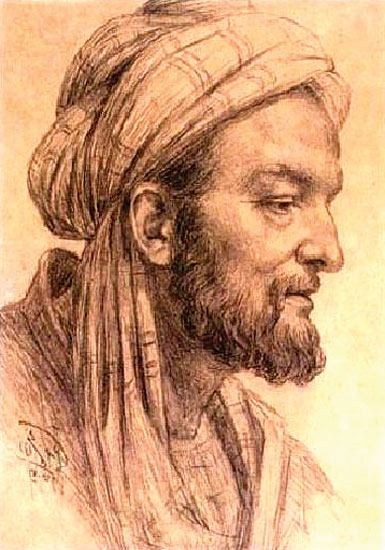1032 VENUS TRANSITION AND OBSERVATION OF IBN-I SINA

Anil ATALAN - Istanbul University, Institute of Science, Department of Astronomy and Space Sciences, Istanbul
Summary: As we learned from the NASA catalogs and the modern simulation programs we used, on May 24, 1032, Venus planet crossed the Sun front. It will be emphasized that the first observer of this rare event is Ibn-i Sina and the conditions under which this observation may have been made.
- Introduction
The passage of Mercury and Venus, the inner planets of the solar system, into the Sun's disk is observed under appropriate conditions and at specific time intervals. These observations have been used since ancient times to solve some problems. For example; It is through this event that it is known that Mercury and Venus are the planets of the Sun with the Sun.
The prominence of the observation that Ibn Sina is thought to have is that scholars such as Bitruci have an evidence of Venus's supernatural acceptance.
2 . Historical Venus Transition Observation Appeals and Observation of Ibn Sina
The phenomenon of the Venus planet passing through the Sun's disk takes place once every 125 years, twice with intervals of 8 years, called the Venus passage. For this reason, it is not very likely to be seen in human life. This is likely to result in serious attention being paid to observations made.
The first claim that the Venus passage was observed is the al-Kindi observation in the 'tarik al-hakuka' written by Ibn al-Kifti. According to al-Kifti's report, this observation was carried out at the time of Hijri 225in Recep (m: 25 May 840). However, the observation of Venus for 91 days, which is thought to be the result of observations, is the result of observing that this observation is actually a sun spot.
The work of this work, which was the subject of the first consistent observational telescope known outside the Venus transition observation of 24 May 1032, was carried out by J. Herrocks in England in 1639. The big history difference between these two observations makes the observation of Ibn Sina more important.
2.2. Records about Ibn Sina's Observation
The first records of Sina's observation of the passage of Venus are found indirectly. Nasireddin al-Tusi, who lived about 100 years after Sina, made an edge in the 9th book of his Almagest commentary and said:
'I know that in one of Ibn Sina's books, Venus wrote what you see as a point on the Sun' (Goldstein, 1969)
After the discovery of this description, research continued and finally found 'Avicenna's Compendium of the Almagest' in Paris Biblioteque National. Here Ibni Sina (at the beginning of his account of the ordering of planetary spheres in Book IX) wrote, "I saw Venus as a point on the surface of the Sun". This is the same as the phrase Nasireddin Tusi attributed to him. However, there is no other record for this observation of Ibni Sina.
2.3. Investigation of Observation Reality
The only Venus passage that Ibn Sina might have observed when he knew it was dead in 1037 is the one in which he lived in 1032. The closest observation that took place outside of this date came to the scene on 22 May 1040.
Another important point in investigating whether this observation is possible is where the observation is taking place. Because if the position does not support the conditions of observation, it makes no sense that the history of observation is appropriate. For this reason, information about Ibn Sina's residence in 1032 was collected at this point, and a map published by Strohmaier in 2006 for Biruni and Sina was reached.
Moving from this map, Ibn-i Sina reached the result in 1032 in the city of Isfahan.
It is the intersection between the planet transition catalogs published by NASA and simulations on open-source astronomy simulator Stellarium, which may have been observed near the sunset of Isfahan in the year 1032. The question to be asked at this point is how observation has taken place.
Observation can be carried out without using any tools as it will occur at a time close to sunset. Because the angular size at the time of the passage of Venus from the Sun Front is determined to be selectable by the human eye as a result of calculations made. However, given the speed of the spread of knowledge in Sina's time and Islamic geography, the observation is likely to have been made with 'Camera Obscura', the invention of the needle-piercing camera Ibn-i Heysem.
3 . Results
As a result, if we examine it with our present data and our present technology, it is certain that Ibn-i Sina observed the passage of Venus, which took place in 1032.
references
Goldstein, B. R., 1969, 'Some Medicinal Reports of Venus and Mercury Transits', Centaurus, 14, 49-59
Special, M.E., 2012, 'Planetary Transitions in History and 2012 Venus Transition' UAK 2012
Espenak, F., 2004, http://eclipse.gsfc.nasa.gov/transit/catalog.html
Solmaz, A., 2012, '2012 and 1032 Venus Transitions and Ibn Sina' UAK 2012
Vaquero, J.M., 2009, 'The Sun Recorded Through History'
Stellarium planetarium software
Turkish History Institution Date Translation Guide
Congratulations @anilatalan! You have completed some achievement on Steemit and have been rewarded with new badge(s) :
Click on any badge to view your own Board of Honor on SteemitBoard.
For more information about SteemitBoard, click here
If you no longer want to receive notifications, reply to this comment with the word
STOP